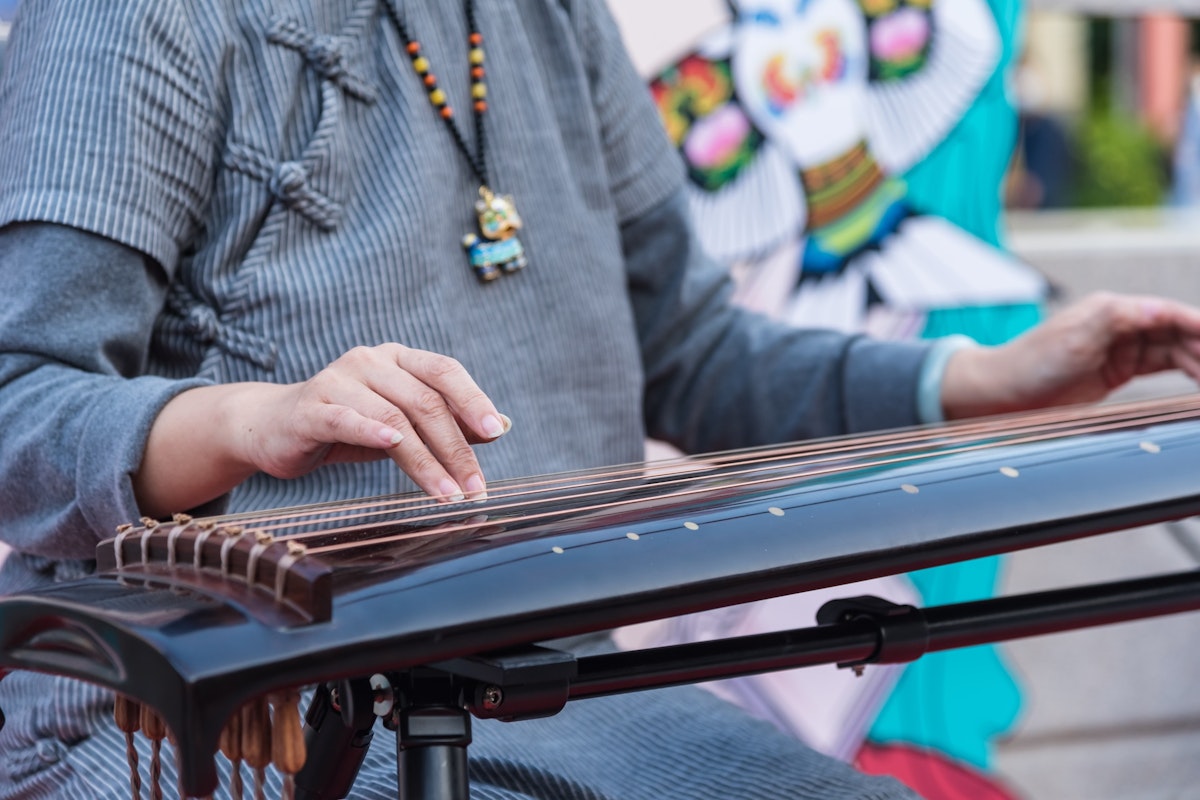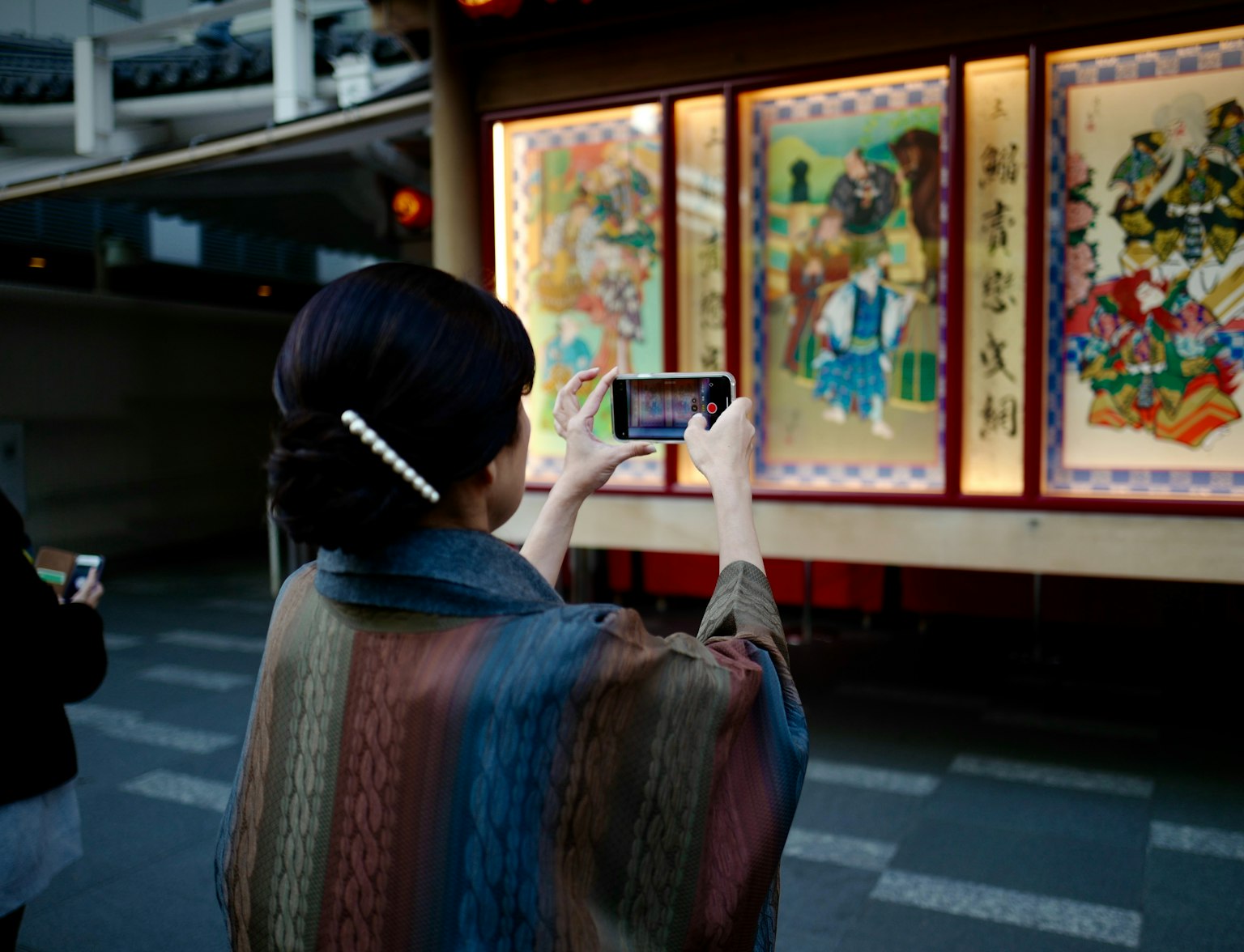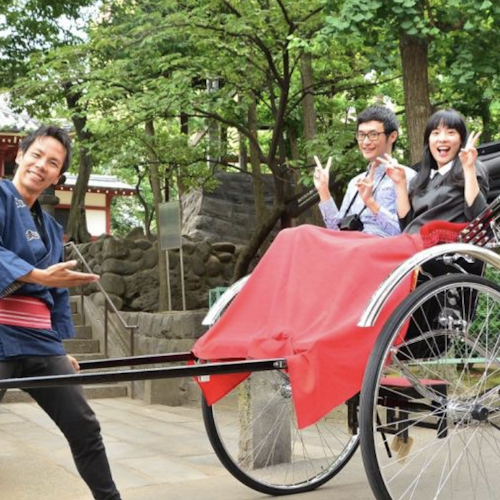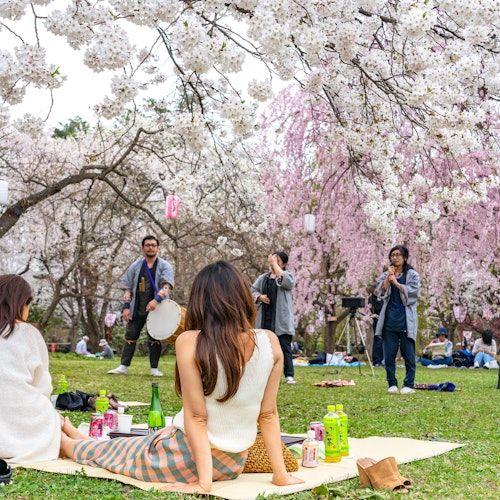

Picture this: The soft strum of a string echoes through a quiet room, an enchanting melody born from the careful dance of fingers on a koto. In another moment, the ethereal whisper of the shakuhachi flute fills the air, each breath turns into a harmony that is as transient as it is beautiful. These are not just musical instruments, they are voices from the past, narrating stories steeped in history, passion, and an intricate understanding of human nature. They form the foundation of traditional Japanese music, a unique soundscape where each note reflects a civilization, each rhythm an embodiment of a culture's heartbeat.
Welcome to a comprehensive exploration of this rich tapestry, a deep dive into the world of koto, shakuhachi, and other traditional Japanese musical instruments. From the vibrant echoes of folk music to the grand symphonies of court music, the dramatic crescendos of theater music to the harmonious ensembles of instrumental compositions, this guide presents a panoramic view of Japan's musical heritage.
Whether you're a connoisseur of world music, an emerging ethnomusicologist, or simply an enthusiastic traveler seeking a cultural journey, this is your invitation to immerse yourself in the melodies that have shaped and continue to shape the cultural identity of Japan. Together, let's embark on this melodious voyage, discovering and appreciating the legacy of sound that echoes the soul of Japan.
Japan's folk music, or Min'yō, is a window into the daily lives of its people, its rhythm resonating with the working pace and its lyrics reflecting stories from various walks of life. This genre is as diverse as the country itself, with each region boasting its unique style and variations. Folk songs serve as the backdrop of seasonal festivals, communal farming, fishing expeditions, and more. The music, while simple, carries the echo of the people's shared emotions—joy, sorrow, love, and longing—making it a deeply relatable and human experience.
Embed Video: Japanese Geisha Music
Instruments such as the shamisen, a three-stringed lute, often accompany the robust vocals, adding depth to the overall sound. The shakuhachi and koto also feature in some variants of Min'yō, with the shakuhachi’s haunting, ethereal notes, and the koto’s delicate, stringed harmonies adding layers to the rich musical tapestry. The resulting blend is a resonating melody that captures not just the essence of the landscape it originates from but also the hearts of those it reaches, regardless of where they are. Japan's vibrant folk music is a beautiful reminder that at the core of our human existence, regardless of our geographic or cultural differences, our emotional experiences unite us all.
When we think of Japan's court music or Gagaku, we are transported back in time to the imperial courtrooms, envisioning the grandeur and the cultural sophistication of an era gone by. Gagaku, translated as 'elegant music', is the oldest existing orchestral music in the world. It was originally performed for the imperial court and aristocracy, with roots tracing back to the 8th century. The music is solemn yet profound, exuding a sense of majesty and respect. It brings together various elements from Chinese, Korean, and indigenous Japanese music, thus showcasing a beautiful fusion that mirrors the historical and cultural exchanges that shaped Japan.
Embed Video: Gagaku - Ancient Japanese Court Music (1971)
Gagaku involves a variety of wind, string, and percussion instruments, each adding to the stately ambience. The sho, a reed instrument, often leads the melody with its uniquely resonant harmonies, while the hichiriki, another type of reed instrument, adds powerful tonalities. String instruments like the biwa and the koto also make their appearance, contributing to the rich complexity of the sound. Among these, the ethereal, flute-like notes of the komabue and ryuteki and the deep rhythmic pulse of the taiko drums shape the intricate soundscape. The grandeur of Japanese court music invites you to lose yourself in a reverie of historical elegance, immersing you in a captivating blend of music that is as culturally significant as it is melodically enchanting.
Japanese theatre music, present in traditional forms of drama such as Kabuki and Noh, forms an integral part of the narrative, enhancing the intensity of the plot while infusing life into the characters and their stories. These music forms are so intrinsically woven into the fabric of the performance that it's hard to imagine the drama unfolding without their rhythmic pulses or melodious interludes. In Kabuki, for example, music serves as the emotional language of the performance, conveying what words sometimes can't, and thus enabling a deeper connection with the audience.
Embed Video: Kabuki and Traditional Japanese Music
In these theatrical performances, different kinds of traditional instruments take center stage, each complementing the drama in its unique way. The shamisen, a three-stringed instrument, is integral to Kabuki, its powerful tones often dictating the mood of the scene. The fue, a Japanese flute, breathes life into intense moments with its vibrant, piercing notes. Instruments like the koto and shakuhachi can also be utilized, adding layers to the sonic backdrop. Then there's the rhythmic beat of the taiko drums, accompanying the dance and driving the drama. As the plot thickens and the music builds, the audience is drawn into the heart of the story, fully immersed in the drama, rhythm, and intrigue of Japanese theatre music.

Pass-by Kabukiza Theater, a venue for traditional Kabuki performances.
The world of traditional Japanese music is a vast tapestry woven with the threads of numerous unique and captivating instruments. Each instrument, with its distinct sound, history, and role, contributes to the rich and varied soundscape of Japanese music. Today, we will explore these remarkable instruments and their contributions to the grand symphony of Japan's musical heritage.
1. Koto: The Enchanting Stringed Harmony
When you hear the koto, a thirteen-stringed zither-like instrument, you're hearing a piece of Japan's soul. A symbol of Japanese music, the koto produces sounds as enchanting as a cascading mountain stream or as serene as a gently rustling breeze through the cherry blossoms. The instrument's long, slender body and the exquisite craftsmanship that goes into its creation add to the mystique, making it a truly visually and sonically enchanting instrument.
Embed Video: さくら(Sakura) 25絃箏 (25 strings koto)
The music of the koto is a harmonious blend of delicate plucking and sweeping gestures that capture a wide range of expressions. Its unique tuning system and adjustable bridges allow musicians to modify each string's pitch, contributing to its versatile soundscape. This flexibility has allowed the koto to adapt and thrive through various eras, genres, and styles, from the elegant court music of the Heian period to the lively modern compositions of today. Every note from a koto invites the listener into an intricate world of melodious storytelling, bringing to life the landscapes, emotions, and tales of Japan in ways words often can't. Whether it's a heartfelt folk song or a sophisticated orchestral piece, the enchanting stringed harmony of the koto leaves an unforgettable imprint on the canvas of Japanese music.
2. Shakuhachi: The Zen Flute's Echoes
The Shakuhachi, a traditional Japanese bamboo flute, is more than just a musical instrument. It's an emblem of Zen Buddhism, its ethereal notes often serving as a path to meditation and spiritual enlightenment. The term "shakuhachi" refers to the traditional length of the flute, 1.8 shaku, which equates to approximately 54.5 centimeters. However, this versatile instrument can vary in size, each variant producing unique notes that range from a deep, soothing hum to the high, piercing whistle of a gusty wind.
Embed Video: 尺八 SHAKUHACHI flute - Rodrigo Rodriguez - contemporary Japanese music
The unique feature of the shakuhachi lies in its ability to produce a myriad of sounds from the simplest of materials - a length of bamboo. Shakuhachi music is synonymous with the essence of Zen, its tranquil sounds encouraging introspection and peace. Yet, it is also found breathing life into folk music, creating an atmosphere in theatrical performances, and lending its voice to modern compositions. The haunting melodies of the shakuhachi echo through the annals of Japanese music, touching hearts with its serene, thoughtful tones. In each echo, it carries the profound wisdom of Zen, reminding us of the beauty of simplicity and the power of mindfulness.
3. Shamisen: The Trio of Strings That Sing
The shamisen is a traditional Japanese string instrument that has long captivated audiences with its striking sound and compelling presence. It's a three-stringed lute, and its sound can be easily recognized, capturing a wide range of tones from a deep, drum-like resonance to a high, twangy melody. The shamisen's music is not just heard; it's felt. It invites a foot-tapping rhythm and a soulful engagement that often leaves audiences enchanted.
Embed Video: Shamisen Girls Ki&Ki - Tsugaru Jongara Bushi
Playing the shamisen involves striking the strings with a large plectrum, known as a bachi. The force of the bachi not only on the strings but also on the skin-covered body of the instrument produces a rhythmic, percussive sound, adding an extra layer to the melody. It's found in a variety of Japanese music genres, from the vibrant beats of folk music to the intense drama of kabuki theater and even in contemporary pop and rock music. The instrument's versatility and unique sound have given it a universal appeal, making it an enduring icon of Japanese music. Through the voice of the shamisen, you can hear the trio of strings singing the tales of Japan's past, present, and a hint of its evolving future.
4. Hichiriki: The Strong Voice of Tradition
The hichiriki, a double-reed Japanese wind instrument, is often dubbed the "strong voice" of Gagaku court music. Its penetrating and powerful tone commands attention, cutting through the orchestral ensemble to assert its presence. Despite its small size, the hichiriki's impact on traditional Japanese music is undeniable, with a history that dates back to the 8th century.
Embed Video: Gagaku: Wind Instruments
While the hichiriki may not be as widely recognized as some other Japanese instruments, its unique sound and significant role in traditional music make it an instrument of great cultural importance. It has a cylindrical shape and is usually made of bamboo, with a mouthpiece made of reed. When played, the hichiriki produces a high-pitched, somewhat nasal sound that, while initially striking, is capable of expressing a wide range of emotional nuances. From the solemn court music of the ancient imperial palace to the sacred melodies of Shinto rituals, the hichiriki's sound is a poignant reminder of Japan's vibrant cultural history. It continues to echo the strong voice of tradition in the heart of Japanese music.
5. Komabue: The Flute's Whisper on Stage
The komabue, a transverse flute made traditionally from bamboo, is a lesser-known but enchanting contributor to the world of Japanese music. It carries the whispers of the wind through its slender body, releasing them in melodies that can range from soft and soothing to intensely vibrant. Found primarily in Gagaku, Japan's ancient court music, the komabue has been gracing stages with its gentle music for centuries.
Embed Video: 高麗笛 Komabue 高麗壱越調 意調子
Komabue's smaller size compared to other flutes like the ryuteki allows it to create a unique, higher-pitched tone that can be incredibly expressive. Musicians often use this quality to simulate the sound of birds or create a floating, dreamlike atmosphere in their compositions. The subtle but evocative whisper of the komabue provides a contrast to the rich tapestry of sounds from other Gagaku instruments, bringing a delicate balance to the ensemble. The music of the komabue, whether echoing through the grand halls of a palace or quietly enhancing the atmosphere of a small theatre, carries with it the enduring elegance and subtle charm of traditional Japanese music.
6. Sho: The Ancient Harmonies Revisited
The sho, a free-reed instrument akin to a mouth organ, is one of the most distinctive instruments in traditional Japanese music. With its origin traced back to the ancient courts of Chinese dynasties, the sho made its way to Japan around the 8th century and has since remained a significant aspect of Gagaku, Japan's imperial court music. Its hauntingly beautiful sound, often compared to the mythical phoenix's cry, adds a layer of ethereal beauty to the grandeur of court music.
Embed Video: Oshikicho no Choshi (traditional) - Naomi Sato (sho)
The sho is composed of 17 slender bamboo pipes, each housing a metal reed. These pipes are affixed to a wind chamber made of lacquered wood. Despite the seemingly complex construction, the resulting sound is an exquisite harmony that's both calming and uplifting. In Gagaku, the sho's role is to provide a harmonious undertone, filling the ensemble with sustained chords that create a mystical atmosphere. In recent years, the sho has also found its way into contemporary music, its ancient harmonies revisited and appreciated by modern audiences. Its unique sound not only encapsulates the spirit of traditional Japanese music but also enriches the evolving soundscape of the global music scene.
7. Biwa: Strumming the Strings of History
The Biwa, a short-necked lute, is a symbol of Japan's musical tradition that strums the chords of history. With its origins in the Tang Dynasty of China, the biwa found its way into Japan around the 7th century. Over time, it evolved into various forms, each with its unique features and functions. The robust and powerful sound of the biwa is as resonant as the narratives it often accompanies, filling the air with a melodic retelling of ancient tales and histories.
Embed Video: Satsuma Biwa at Sengan-en
Traditionally, the biwa was the chosen instrument of Buddhist monks, traveling bards, and court musicians, its voice narrating epic war tales, Buddhist parables, and folk legends. The characteristic rapid strumming and plucking techniques, combined with the resonant voice of the performer, created a compelling storytelling format that deeply impacted Japanese culture. Although its popularity waned with the advent of more modern forms of entertainment, a resurgence of interest in traditional music has brought the biwa back into the spotlight. Today, it continues to strum the strings of history, its music resonating with the heartbeat of Japan's rich cultural past and echoing into the future of its musical evolution.
As we conclude our melodious journey through the captivating realm of traditional Japanese music, we have seen how each unique instrument contributes to the rich tapestry of Japan's musical heritage. But there is no substitute for experiencing this harmonious culture firsthand. Just as each instrument brings a unique melody to the symphony, so does every aspect of Japan tell a distinct story - a story best heard and seen in person.
At Trip to Japan, we make these stories come alive through our meticulously curated tours. We invite you to truly immerse yourself in the rich cultural tapestry of Japan - be it through vibrant cityscapes, tranquil temples, stunning natural landscapes, or soul-stirring live performances of traditional music. Our tailored tours ensure an unforgettable experience of the true essence of Japan. So if this exploration of Japanese music has piqued your curiosity, why not let your next adventure be a 'Trip to Japan'? Visit our website to explore and book a tour, and let us guide you on a journey through the enchanting rhythms of Japan's heart and soul. Embark on your musical adventure today!



